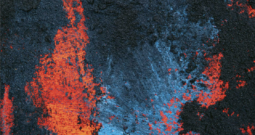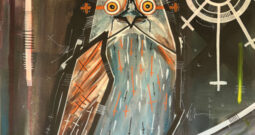from the editor's desk

A Review of ‘Beauty’ by Bri Lee
Lee, Bri. Beauty. Sydney, Allen & Unwin: 2019. RRP $19.99, 160pp, ISBN:
9781760876524
Lianda Burrows
After investing so much time in the solitary act of writing, a book tour must feel like a daunting prospect. The related pressures of photoshoots, school visits, and the public gaze figure prominently in Bri Lee’s sophomore work Beauty. Where Eggshell Skull traced Lee’s journey as a historical sexual abuse complainant in the Australian legal system, Beauty considers the standards imposed on women by advertisers, corporate culture, other women, and even themselves. The book suggests that while standards of beauty may have changed, visionary women are still expected to be beautiful.
This is a compassionate and intimate piece of writing. Lee cares about her readership and takes her privilege seriously in terms of race, education, and class. Role models are crucial to young women trying to navigate the world and its challenges. It is impossible to overstate Lee’s work as an advocate for women or her central role in the reassessment of Queensland’s ‘mistake of fact’ defence by the justice commission.
A much shorter book than Eggshell Skull, Beauty could be seen as outside the realm of Lee’s formal expertise. As such, her arguments, while impassioned and well-intentioned, are not as strong. The problems I find are probably due to the work’s brevity and short turnaround. There are, for instance, some editorial oversights. The punctuation of the passage ‘I paid attention to that feeling, and then said, “Fuck off”, to the jeans’ stands out as an example (121). In addition, given that Lee speaks so powerfully to young women, the decision to include specific weight loss details strikes me as coming too close to a primer for disordered eating. I am not convinced these inclusions do anything to advance her case.
Indeed, it is on the subject of eating disorders where Lee makes her most contentious assertions. Despite stating at the end of Beauty that she no longer seeks to understand clinical eating disorders, the subject comes into focus at various points:
Only then could I be sure I’d done my best, perfected the pursuit: when I watched my family crying at a hospital bed through slits beneath my tired eyelids. I loathed that image and absolutely did not want that kind of attention. (39)
The notion that having ‘perfected the pursuit’ of dieting is what results in a hospital bedside family vigil—a loathsome end for a woman who ‘absolutely did not want that kind of attention’ (39)—is one of the most prevalent and damaging public perceptions of Anorexia Nervosa. Again, Lee concludes Beauty with a final comment on the issue:
In truth, cases of obviously diagnosable anorexia and bulimia are no longer what I seek to understand. The perfectionist in me can see the hospital bed option and empathise with it. I’ve known enough young women who’ve gone there and envied them their resolve even more than their boniness. (123)
It is a long bow to draw that Anorexia Nervosa is a product of the same perfectionism that Lee discusses in Beauty. As a woman for whom ‘the hospital bed option’ was a reality for many years, I would suggest that the notion that it was an ‘option’ I arrived at through my sheer ‘resolve’ misrepresents the nature of the illness.
Talking publicly about Beauty, Lee suggests that this is a book of questions, not answers, but this does not preclude her from making some bold statements: ‘It’s not enough to disregard the body, for that is also disdain and disowning. I must actually like my body’ (122).
I would argue that it actually might be enough to disregard the body. Is this not, overwhelmingly, what most men do? To maintain the position that the body is a small consideration in one’s sense of self is quite an achievement. The number and intensity of things which are more important to a woman than what she weighs are significant signs of a positive self-image. I support any woman who loves her body but would encourage those who might still grimace at its countenance not to despair.
When Lee is writing about corporate middle class culture, however, her critique of beauty and self-destructive perfectionism is both erudite and penetrating. ‘You were either fit or trim or just weren’t working hard enough. Your body was how you conveyed wealth and status to your peers, it was a personality trait, a symbol of goodness and values: an ethical ideal’ (4). Beauty aims to bring an industry—stretching from shapewear to rouge—to account but, at its best, it is an indictment of a culture of corporate exceptionalism that undercuts feminist progress.
‘The cruel joke of high fashion’, Lee observes, is that ‘they make most of their money selling accessories and beauty products’ (48-9) rather than clothes. The reality is that ‘[n]obody buys the actual clothes they are famous for’, she continues, ‘because once we’ve seen the straps and swatches on a lithe creature, we cannot stand seeing them on our own lumps and bumps’ (49). The idea that women will pay to be associated with an ideal that they will never live up to is driven by the same Weltanschauung that underpins the aspirations of the corporate middle class more broadly. It is a culture which feigns to advance ideals of success, beauty, and wellness but, in actuality, purports an ideal where virtue is obtained through commercial transactions. Women consistently spend money, labour, time, and willpower in attempts not simply to be beautiful, but to be virtuous and good. At the very least, they might be seen to be trying. As Lee suggests, what is being sold here is not an aesthetic ideal, or even a material one. Beauty is, in the hands of corporate Australia, an ethical ideal whose teleological endpoint is infinitely deferred. Women remain perpetually trapped in pursuit of an unobtainable ethical goal.
Despite the advances we might expect from the generation following second-wave feminism, Lee suggests that the digital has complicated the progression of women’s liberation as they learn to navigate the new technologies at their disposal. The curation of ‘our own images on Instagram’ means that ‘we can set our own agendas’ but the platform itself also conflates empowerment and achievement with ‘beauty standards which must represent that success’ (108). Lee notes that cover girls, like many Instagram influencers, can be ‘beautiful and meritorious, and sometimes they are only beautiful, but certainly they are never only meritorious’ (108). The irony of Dior producing t-shirts with the slogan ‘WE SHOULD ALL BE FEMINISTS’ but only forwarding them ‘to their approved list of toeing-the-line-influencers’ is not lost on Lee and she succeeds in conveying the hypocrisy apparent in such examples of exclusionary feminism (108).
This is Lee’s gift: centring discussions around beauty institutions and practises which exploit and marginalise women, pitting them against themselves and preventing them from achieving lasting power and autonomy in the world. Lee is not the first to have raised the issue—a fact made evident by her references to Naomi Wolf’s The Beauty Myth (1990)—but every opportunity to interrogate the violence this industry does to women is worth pursuing, and Lee’s work is no exception.
Lianda Burrows is a PhD candidate at James Cook University, under the supervision of the Colin Roderick Professor of Australian Literature. Her research interests include landscapes and gender in Australian culture.





